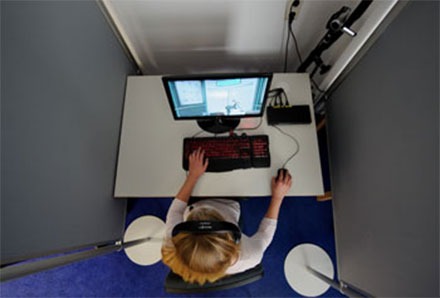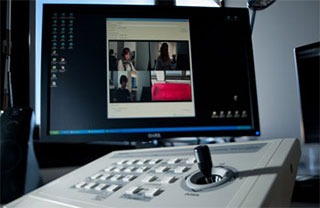GameLab Hohenheim
Gaming studies
The Hohenheim GameLab at the chair of communication studies (interactive media and online communication) is part of the European Research Council (ERC) project, The Social Foundations of Online Gaming (SOFOGA). The Hohenheim GameLab employs a multi-method approach to study the behavior of, and the interaction between computer and video game players. It enables observations of natural gaming situations, as well as the creation of experimental conditions. The different set-ups in the GameLab make it possible to study different forms of single- and multiplayer gaming (co-located, online, local network).


Gaming stations
The laboratory offers four individual gaming stations, each with a HD screen and a high-end gaming PC (incl. gaming mouse and keyboard and a gamer headset). The gaming PCs can also be replaced by four Playstation 3 systems or four XBox 360 consoles. All four gaming stations are equipped with a camera and microphones to record the players’ facial and verbal activity. Every screen can be captured in high definition and synchronously with the screen, camera and audio recordings of all other stations.
Living room setup
The living room setup in the Hohenheim GameLab is designed to study console gaming and co-located multiplayer sessions. It includes a couch, a large HD television screen, a 5.1 surround sound system and the current generation gaming consoles (Playstation 3, Xbox 360, Wii). Player behavior is recorded by a ceiling-mounted dome cam and a high quality microphone. The high definition screen recordings are also synchronized with the camera and microphone recordings.


Control room
The control room contains the control unit for the dome cam and a computer to monitor and analyze player behavior. Screen and camera videos are recorded with the Noldus Media Recorder. The players’ facial expressions are recorded with the gaming station cameras and analyzed using the Noldus FaceReader. Recordings of player behavior, verbal activity, and in-game events (screen capture and audio) can be coded and analyzed jointly using The Observer XT software.
 English
English German
German French
French Italian
Italian Spanish
Spanish Chinese
Chinese